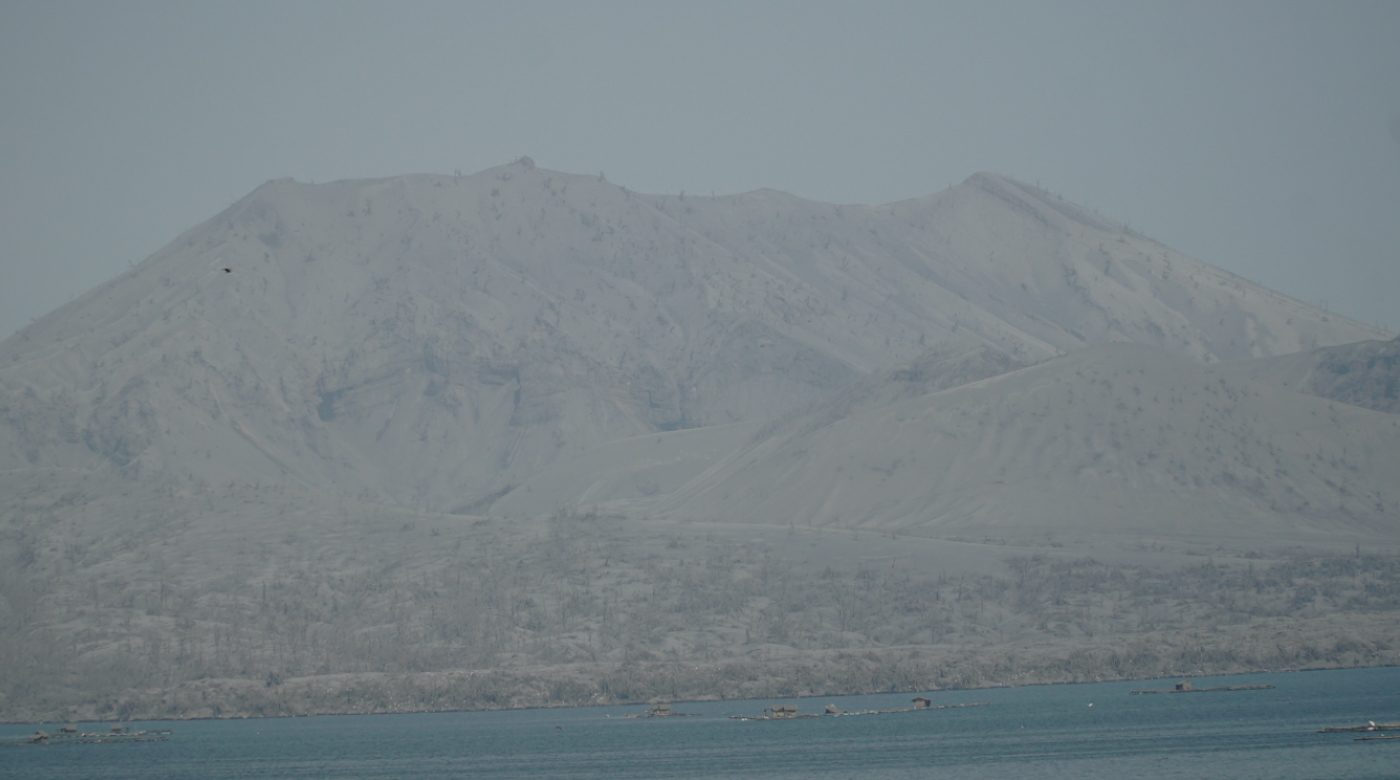SUMMARY
This is AI generated summarization, which may have errors. For context, always refer to the full article.

MANILA, Philippines (UPDATED) – Taal Volcano was downgraded from Alert Level 2 to Alert Level 1 on Thursday, March 19, over two months since it started erupting on January 12.
The Philippine Institute of Volcanology and Seismology (Phivolcs) said in a bulletin at 8 am on Thursday that the downgrade reflects “the overall decreasing trend in the level of monitoring parameters.”
But it added, “Alert Level 1 means that the volcano is still in abnormal condition and should not be interpreted that unrest has ceased or that the threat of an eruption has disappeared.”
If the situation eases further, Taal’s status could eventually be lowered to Alert Level 0. But if there are indications of renewed unrest, Alert Level 2 might be raised again. (READ: FAST FACTS: Taal Volcano alert levels)
What were the reasons for the downgrade? It has been more than a month since Taal’s status was lowered from Alert Level 3 to Alert Level 2 on February 14. Since that time, Phivolcs said it has observed the following:
Low-level volcanic earthquake activity: The daily average of volcanic earthquakes declined to 31 per day between February 14 and March 19, compared to 141 per day between January 26 and February 14. Majority of the volcanic earthquakes were “associated with rock-fracturing processes and only 6 low-frequency events associated with magmatic or hydrothermal activity were detected until March 6.”
Stabilizing ground deformation: Monitoring from February 14 to March 16 showed “very slow and slight uplift of the northern sector of Taal Caldera but continuing subsidence of the southern sector of the caldera and southern [Taal Volcano Island].” These are “broadly consistent with post-eruptive relaxation of the Taal edifice.”
Weak surface activity: There is only weak emission of 50- to 100-meter tall steam-laden plumes from the main crater and along the Daang Kastila fissure. “The last significant activity from the main crater occurred on February 26 to 27 and generated 300-meter-tall steam-laden plumes for 6 hours,” but since then surface activity has eased.
In addition to that, sulfur dioxide (SO2) emission averaged only 56 tons per day between February 14 and 17, then fell “below detection limits.” SO2 is a major gas component of magma.
What happens under Alert Level 1? Phivolcs warned that the following may still occur and threaten Taal Volcano Island:
- sudden steam-driven or phreatic explosions
- volcanic earthquakes
- minor ashfall
- lethal accumulations or expulsions of volcanic gas
What should the public do? Phivolcs again recommended that entry into Taal Volcano Island, classified as a Permanent Danger Zone, remain strictly prohibited.
“Local government units are advised to continuously assess previously evacuated barangays around Taal Lake for damage and road accessibilities and to strengthen preparedness, contingency, and communication measures in case of renewed unrest,” added Phivolcs.
“People are also advised to observe precautions due to ground displacement across fissures, possible ashfall, and minor earthquakes.”
Prior to February 14, Taal Volcano had been under Alert Level 3 starting January 26, and before that, it was on Alert Level 4 beginning January 12.
The unrest affected over half a million people in the provinces of Batangas, Quezon, Laguna, and Cavite, prompting President Rodrigo Duterte to declare a state of calamity in the region of Calabarzon in late February. – Rappler.com
Add a comment
How does this make you feel?
There are no comments yet. Add your comment to start the conversation.